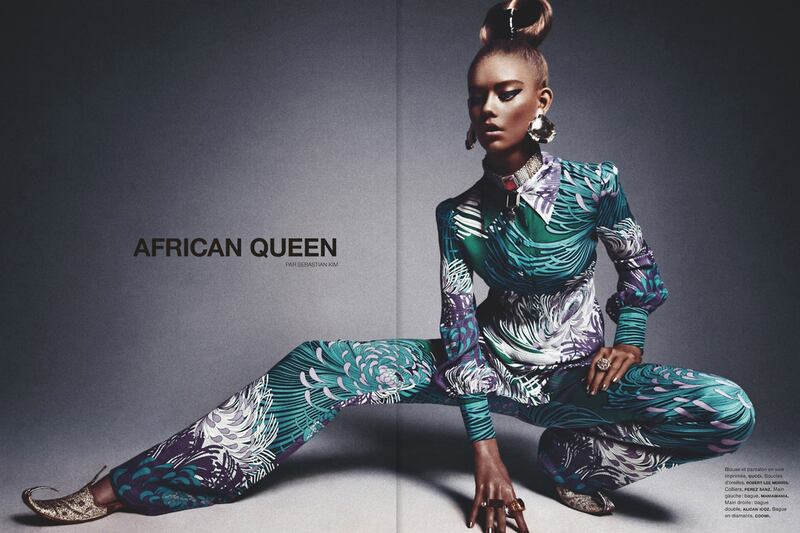
At just 16 years old, model Ondria Hardin has already seen her fair share of scandal.
It started two years ago, when the 5-foot-10 beauty walked in Marc Jacobs’s fall show at age 14, which openly flouted the CFDA’s regulations requiring female models to be at least 16 before setting foot on a runway. “I do the show the way I think it should be, and not the way somebody tells me it should be,” Jacobs told the New York Times at the time. He continued to say that there simply is no controversy, and that “If their parents are willing to let them do a show, I don’t see any reason that it should be me who tells them that they can’t.”
Months later, Vogue China featured Hardin in its pages, despite the fact that Vogue had banned underage models from all of its international editions. The first point in their six-point pact states: “We will not knowingly work with models under the age of 16 or who appear to have an eating disorder.” The statement also stated that the magazinewould ask casting directors to check IDs of models when casting shoots, shows, and campaigns.
ADVERTISEMENT
But the third upset in the young model’s short career has nothing to do with Hardin's young age. The pale-skinned model’s latest endeavor is a fashion spread for Numéro Magazine entitled “African Queen,” in which she appears painted head to toe in brown makeup. In the images she wears a tall cloth headdress, layered silver jewelry, and dusty prints.
Almost immediately, the spread inspired outrage online. An African- American model commented on Jezebel’s post about the news: “Can I see a black girl do SCANDANAVIAN PRINCESS please?” Wrote another: “Googled her name and this girl is ALABASTER,” commented another reader, adding, “Also, do I detect a hint of texturing in her hair to give her that "ethnic look," rounding out this shitshow?” Tumblr account foudre commented on Hardin’s controversial spread, posing the question: “Why hire a black model when you can just paint a white one?”
(Numéro could not be reached for comment.)
But this isn’t the magazine’s first racial offense. In 2010, it used Caucasian model Constance Jablonski to portray an African mother in an editorial spread, complete with Afro and dark face paint, posing with a black baby in a field of wheat.
Numéro joins the ranks of other magazines that have featured racially insensitive spreads in the past. In 2006, fair-skinned Kate Moss posed for The Independent wearing nothing but black paint covering her face and body. In 2010, Claudia Schiffer posed for Karl Lagerfeld in yellow and blackface, wearing an afro-like wig, sequined top and brown face and body paint. And in 2012, make-up brand Illamasqua featured a model in dark face paint and makeup.
Unfortunately, increased racial diversity within the fashion industry is still an issue. According to reports, at New York Fashion Week this season, an astonishing 82 percent of models were white. Of the remaining 18 percent, only 6 percent were black. And while some design houses are trying to remedy this problem—see Miu Miu’s spring campaign video that features an entirely black cast—they are few and far between.






